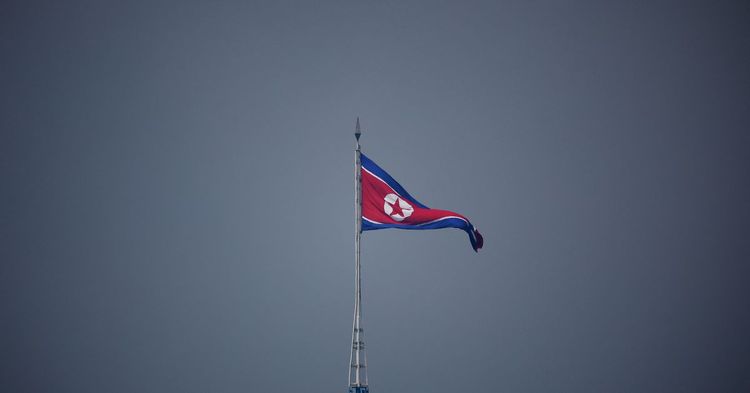Factbox: What's behind North Korea's air zone claims?

SEOUL, July 11 (Reuters) - North Korea has levelled new accusations that U.S. spy planes had repeatedly violated its airspace and the skies over its "economic water zone" since last week, threatening to shoot the aircraft down if "illegal intrusions" continue.
The region has seen tension flare over air patrols and flight drills, amid conflicting claims on aerial and sea boundaries between Japan, China and the two Koreas with no international rules governing them.
Here is what we know about North Korea's claims on its air zones and some history of disputes.
AIR ZONESKim Yo Jong, the powerful sister of North Korean leader Kim Jong Un, accused a U.S. Air Force strategic reconnaissance plane of intruding into the North's "economic water zone" on Monday off the east coast of the Korean peninsula.
The North's defence ministry also said several U.S. spy aircraft have entered its airspace this year, including an Air Force plane flying off its east coast several times last week.
North Korea in 1977 formally declared its economic water zone extended 200 nautical miles (370km) from the outer limits of its territorial waters.
The ordinance is in line with the 1982 U.N. Convention on the Law of the Sea which stipulates the 200-nautical mile Exclusive Economic Zone (EEZ) and member states' rights to fishing and mining within their boundaries, but does not grant their sovereignty over the waters' surface or the airspace above it.
A month later, the North declared "military sea boundary" stretching 50 nautical miles (93km) off its east coast and to the boundary line of its economic water zone along the west coast, banning any activity by foreign military vessels and aircraft.
The North's moves to demarcate its maritime boundaries were primarily intended to undercut the Northern Limit Line, a de facto inter-Korean sea border, which was drawn by the U.S.-led U.N. Command at the end of the 1950-53 Korean War.
The Pentagon and South Korea's military dismissed the North's accusations this week as groundless.
Col. Lee Sung-jun, spokesperson of Seoul's Joint Chiefs of Staff, said the North's "economic water zone" largely adopted the internationally agreed concept of the EEZ which guarantees freedom of navigation and overflight.
"You don't call it invasion when you fly over there," he told reporters on Tuesday. "They might have their own purpose for using that as an excuse, and possibly to build justification for a provocation."
SURVEILLANCE FLIGHTSThe United States, which stations some 28,500 troops in South Korea, conducts routine reconnaissance flights around the peninsula with various air surveillance assets.
The North's defence ministry said the U.S. RC-135 and U-2S strategic reconnaissance planes and RQ-4B drone flew over its east and west coasts last week.
North Korea has for years been striving to beef up its anti-aircraft capabilities, while modernising aging air defence systems including Soviet-era anti-aircraft missiles.
The cash-strapped country is not known to have imported any new warplanes since the early 2000s, focusing on cheaper, easier to use air-defence missiles.
In 2021, North Korea tested what state media called a new, "remarkable" anti-aircraft missile.
HISTORY OF DISPUTESIn 1969, a North Korean MiG-21 aircraft shot down a U.S. Navy EC-121 carrying out a reconnaissance operation, which crashed off the peninsula, killing all 31 Americans on board.
In 2003, four North Korean fighter jets intercepted a U.S. RC-135 reconnaissance aircraft on a routine mission in international airspace.
The area has been the scene of sometimes intense military and political brinkmanship, due partly to overlapping air defence identification zones (ADIZs) of China, Russia, Japan and South Korea.
Unlike airspace, countries may unilaterally declare ADIZs and demand foreign aircraft identify themselves. There are no international laws that govern the zones.
Lee, the South Korean military spokesperson, said the North's claims do not appear to be linked with ADIZ issues.
Reporting by Hyonhee Shin; Editing by Lincoln Feast.
Our Standards: The Thomson Reuters Trust Principles.




































































